Submitted by WA Contents
Peterson Rich Office transforms the Rubin Museum's third floor galleries with the Mandala Lab
United States Architecture News - Oct 26, 2020 - 12:35 5948 views

Brooklyn-based architecture and design practice Peterson Rich Office (PRO) has revealed design for the transformation of the Rubin Museum's third floor galleries with the Mandala Lab in New York.
The new space will be a destination where art, cognitive science, and contemplative practice come together, offering visitors of all ages tools to feel empowered, connected, and resilient.
The Rubin Museum of Art announced that the museum will be closing its third floor galleries on November 10 and will begin construction on a new interactive space for social and emotional learning for all ages.
Scheduled to reopen fall 2021, the third floor, renamed Mandala Lab, will bring cognitive science, contemplative practice, and visitor-contributed art experiences the new home for School and Family Programs.
The Mandala Lab will draw on the symbolism of a Tibetan Buddhist mandala, which also serves as conceptual inspiration for the floor.
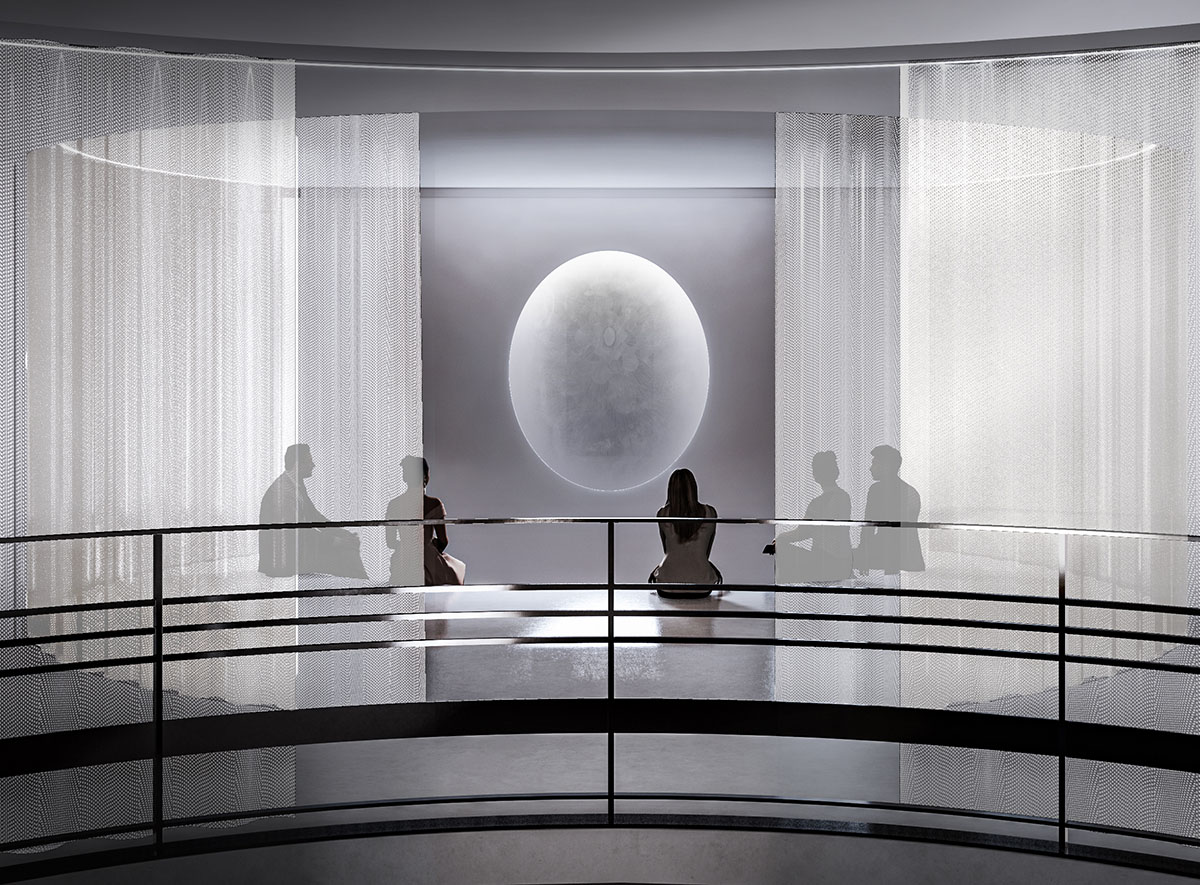
Launching a design competition earlier this year, the Rubin selected the award-winning architecture firm Peterson Rich Office (PRO) to lead the initiative, marking the firm’s first art museum project in New York City. The collaborative project is being conceived of in consultation with Columbia University Professor of Psychology Dr. Lila Davachi, Columbia University Professor of Neurobiology Dr. Stuart Firestein, and University of Wisconsin– Madison Center for Healthy Minds Professor of Contemplative Humanities Dr. John Dunne, with interpretative teachings provided by Dzogchen teachers Mingyur Rinpoche and Ponlop Rinpoche.
The Mandala Lab will strengthen the Rubin’s mission by creating transformational moments through Himalayan art for visitors, offering pathways to develop calmness, resilience, emotional intelligence, and connection. Masterworks: A Journey through Himalayan Art will reopen on January 21, 2021, on the fifth floor.
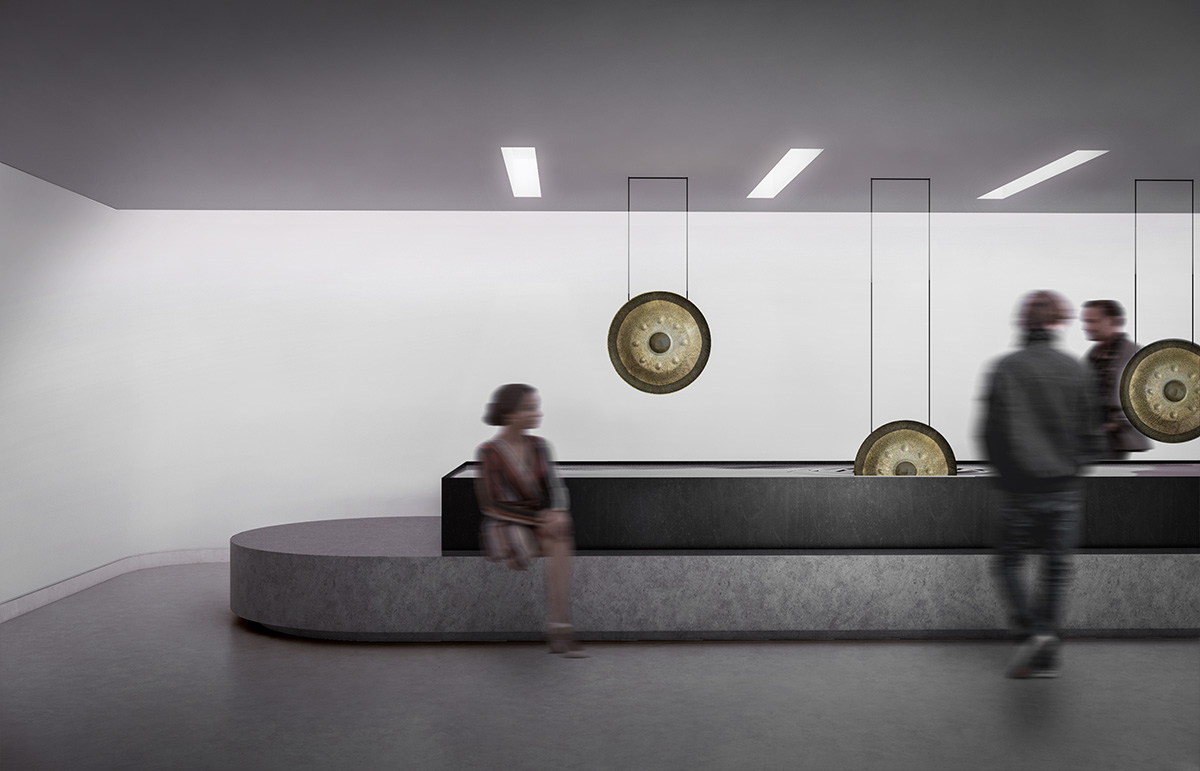
Social and emotional learning teaches skills to recognize emotions for what they are and harness their energies in a way that helps the individual.
At the Rubin this will become the foundation of School and Family Programs, as a way to provide younger generations with tools for navigating the world more skillfully. Scientific research shows that contemplative practices such as meditation and mindfulness, rooted in Buddhist traditions, can help people become more self-aware, compassionate, and focused, as well as find inner peace and happiness.
By referencing Buddhist wisdoms embedded in the art in the Rubin’s collection along with psychological findings, the Mandala Lab aims to offer tools and new perspectives for coping with the day-to-day challenges, anxieties, and emotional burdens brought about by personal and societal complexities—all heightened by the Covid-19 pandemic.
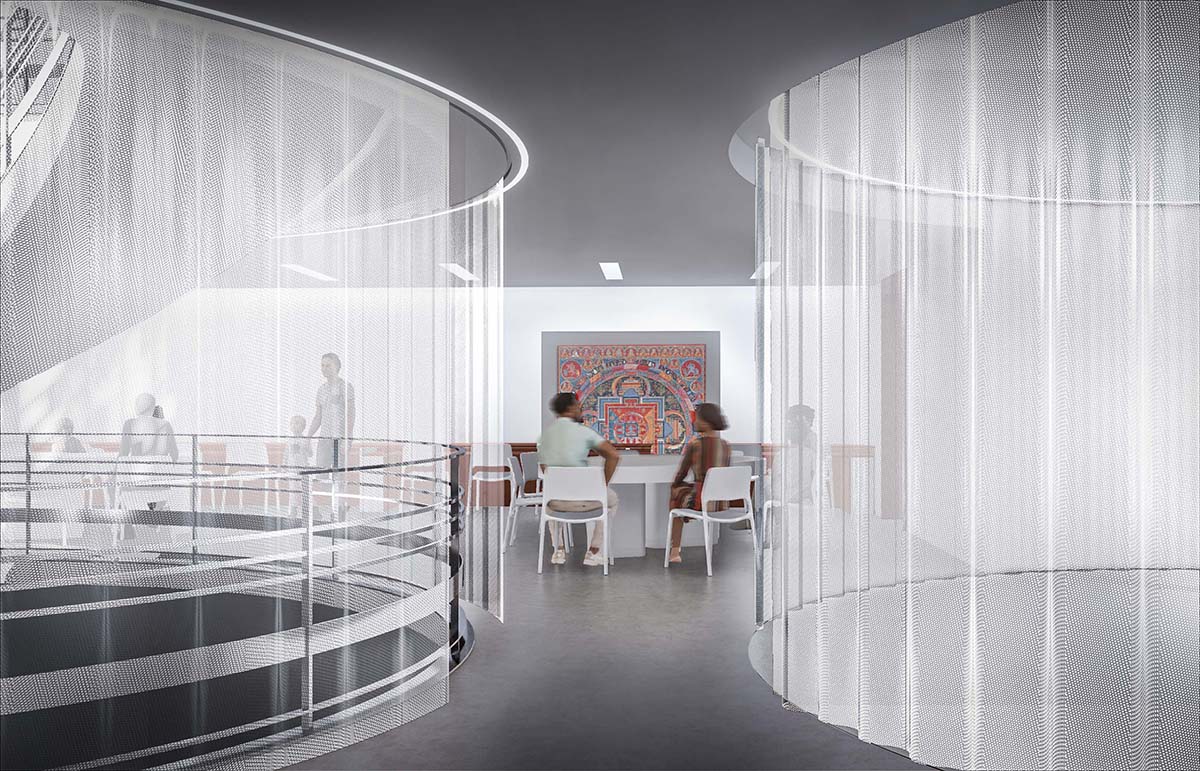
"Our society is struggling right now. We are navigating a pandemic, we are grappling with a climate crisis, and we are confronting longstanding inequities and deep divisions in our society," said Executive Director Jorrit Britschgi.
"With the Mandala Lab, our hope is to empower us to face these challenges: to widen our imagination, understand and manage our emotions, enrich our capacity for empathy, and connect with others. Our hope is for the Rubin to be a Museum where art, ideas, research, and our emotions connect."
Designed and led by PRO founding architects Miriam Peterson and Nathan Rich, the Mandala Lab is conceptually and architecturally inspired by a mandala.
In Tibetan Buddhism a mandala can take the form of a painting on cloth, an impermanent creation made of colored sand, a large three-dimensional structure, or a ritual object. It represents the Buddhist concept of the universe as well as a palace of enlightened deities.
As a widely used visual tool in Tantric Buddhism, the mandala serves as a contemplative aid in visualization practices aimed to transform one’s ordinary emotions into the more desirable qualities of enlightened beings. The Rubin Museum’s permanent collection features over 100 depictions of mandalas.
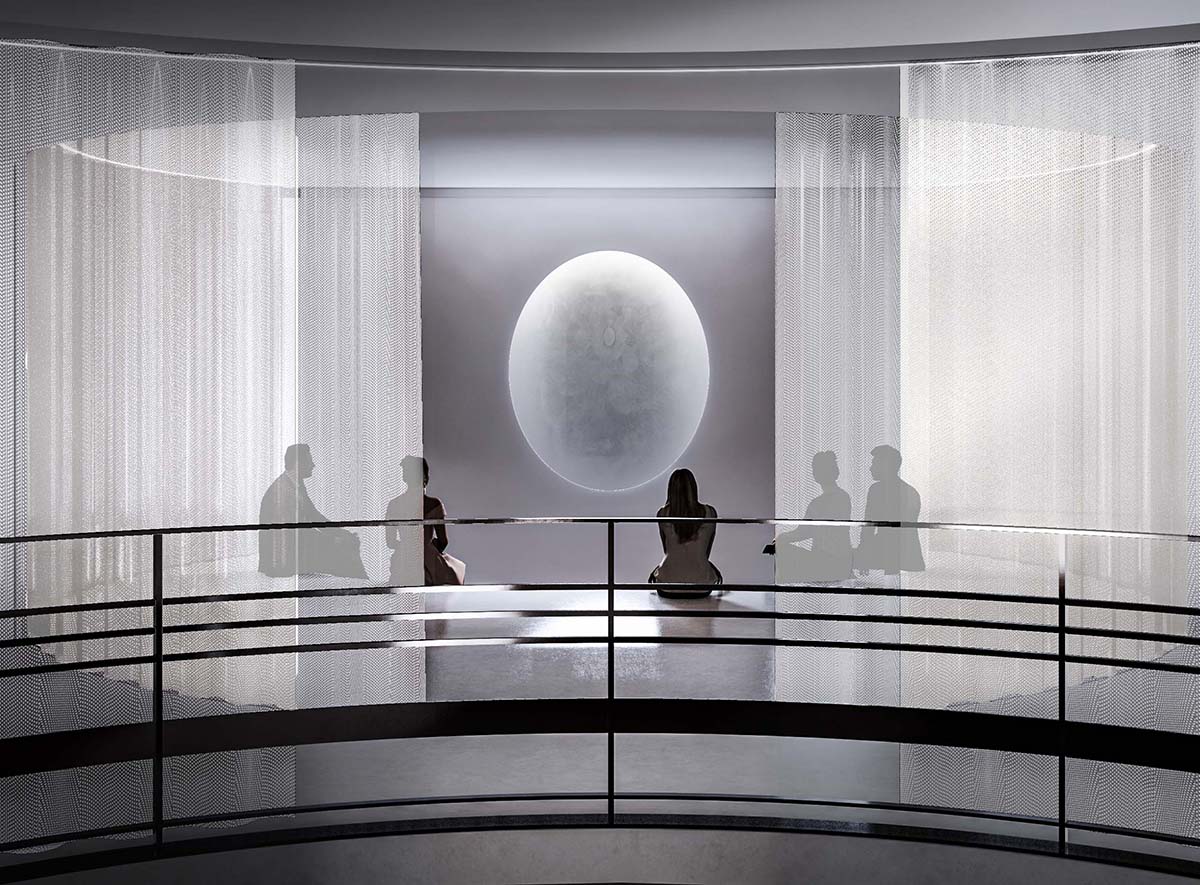
The third floor will be divided into quadrants representing the cardinal directions (East, South, West, and North) and reference both the symbolic colors and elements (earth, fire, air, water) of the mandala practice. Each quadrant will offer an activity that invites visitors to recognize an emotional state within themselves that is difficult to control, such as anger, pride, jealousy, or desire, and convert it into a complementary wisdom such as equanimity and discernment.
Contemporary artists working across disciplines are being commissioned to provide art experiences for the new floor that are informed by the mandala's insightful teachings on emotions.
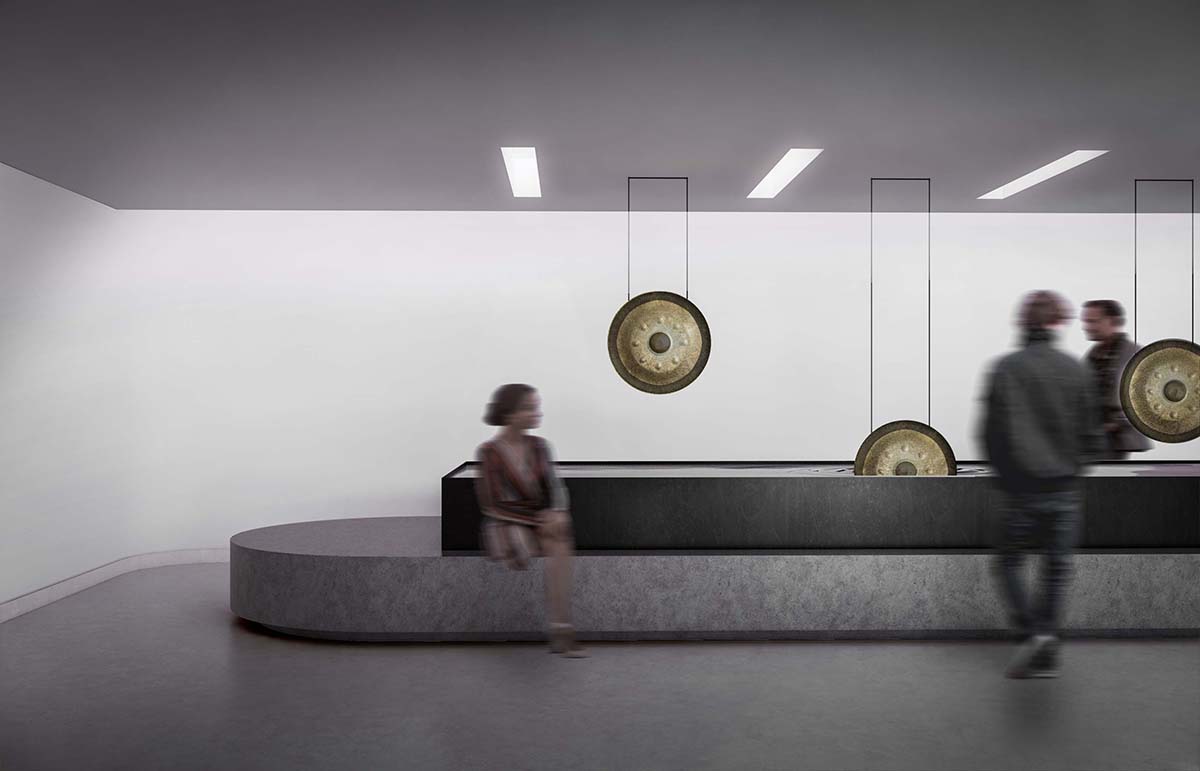
The 2,700 square foot design will include: a multipurpose open floor plan bounded by light, both natural and internally sourced, that converts for education, exhibition, or event needs, a small amphitheater for experiential and digital educational content, a flexible space for lights-on learning with tables and chairs, modular, art-lab-like furniture, a wide digital screen with flexible seating for visitors and rounded walls to make the space feel larger.
"The Rubin has long fostered dialogue between art, contemplative practice, and contemporary science, but the Mandala Lab is an ambitious experiment," said Rubin Museum Chief Programmatic Officer Tim McHenry.
"By developing a simulacrum of a tantric Buddhist teaching that anyone of virtually any age and cultural experience can take part in, we equally provide a platform for scientists to investigate the benefits that these practices can offer us in our world right now. We are fortunate to have had guidance from scholars like John Dunne and teachers like Mingyur Rinpoche who actively explore this intersection of the mind sciences and wisdom traditions."
All renderings © Peterson Rich Office / The Rubin Museum of Art
> via Peterson Rich Office
